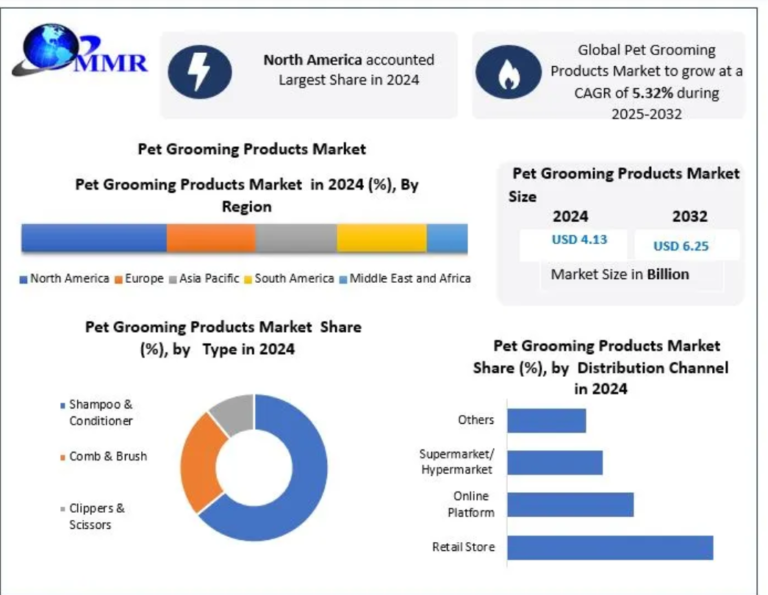Introduction
The technological ecosystem is undergoing a profound transformation with the rise of fifth generation cellular networks commonly known as 5G. This innovation has far reaching implications across numerous sectors particularly in Mobile Application Development which is now positioned at the forefront of digital advancement. The progression from earlier generations of mobile networks to 5G has redefined the possibilities of connectivity enabling higher speeds reduced latency and vastly improved reliability. As businesses consumers and governments adopt these infrastructures it becomes crucial to analyze how this shift is altering the strategies designs and implementations of mobile applications in both theoretical and practical frameworks.
The introduction of 5G does not only represent an incremental improvement in connectivity but rather a radical restructuring of digital architecture. The interplay of data transmission capacity enhanced real time communication and the integration of multiple devices across the Internet of Things opens new opportunities and challenges for developers. In an environment increasingly shaped by cloud computing artificial intelligence and automation 5G positions itself as a backbone enabling previously unattainable functionalities. The analysis of these transformative patterns requires a comprehensive academic evaluation in order to understand the theoretical underpinnings of this technological evolution and its application in society.
The Evolution of Network Generations
To fully appreciate the significance of 5G in reshaping mobile applications it is essential to reflect on the developmental trajectory of earlier mobile communication generations. The first generation focused primarily on analog voice communication. The second generation marked the introduction of digital signals which improved voice clarity and facilitated simple text messaging. The third generation expanded possibilities by introducing mobile data connectivity paving the way for web browsing and multimedia sharing. The fourth generation accelerated data transmission enabling the rise of high definition video streaming real time gaming and globally interconnected social media applications.
The limitations of previous generations were apparent in their inability to meet the growing demand for speed reliability and interconnectivity required by emerging technologies. 5G arrives as a response to these constraints addressing the insufficiencies of bandwidth latency and scalability. Unlike its predecessors 5G offers gigabit level data transfer capabilities combined with latency as low as a few milliseconds and the ability to support millions of devices per square kilometer. Such capabilities are revolutionary for application developers who now have a wider canvas for innovation and experimentation.
Characteristics of 5G Relevant to Application Development
The fundamental technical features of 5G hold direct implications for the architecture of mobile applications. Firstly the increased data transfer speed facilitates instantaneous access to large volumes of information enabling real time analytics and immersive multimedia experiences. Secondly the ultra low latency of 5G networks allows mobile applications to achieve real time responsiveness that is critical in areas such as virtual reality augmented reality and remote medical procedures. Thirdly the enhanced capacity of 5G ensures that numerous devices can be connected simultaneously without compromising the quality of communication. This is particularly relevant in the context of smart cities autonomous vehicles and interconnected industrial machinery.
These attributes reshape not only the possibilities for application design but also the methodologies of development and deployment. Developers are compelled to reimagine user interfaces integrate advanced cloud functionalities and prepare for the wide scale adoption of technologies that rely heavily on instantaneous data exchange. In this respect 5G is not simply an enhancement but a paradigm shift that necessitates a reconsideration of existing theoretical frameworks in application development studies.
Transforming Application Architecture
With the introduction of 5G mobile application architecture is evolving beyond the traditional client server model. Applications are increasingly adopting distributed and edge based architectures in which computation and data storage are decentralized closer to the point of use. This structure reduces latency and increases efficiency while also enabling new forms of interactive and immersive experiences. Edge computing empowered by 5G thus emerges as a core enabler of next generation applications.
Furthermore the scalability of 5G networks allows for the integration of more complex functionalities such as artificial intelligence powered personalization autonomous decision making and dynamic adaptation of services. Applications are now capable of analyzing user behavior in real time adjusting features and delivering content in ways that were previously unattainable. This architectural transformation requires developers to cultivate new skill sets including knowledge of distributed computing principles and real time data synchronization.
Impact on Consumer Applications
From a consumer perspective 5G has the potential to redefine the expectations of mobile applications across diverse domains such as entertainment healthcare education and retail. In entertainment ultra high definition video streaming becomes seamless reducing buffering and enabling immersive experiences through augmented and virtual reality. Mobile gaming benefits from low latency connections that facilitate smooth real time interactions in multiplayer environments. Educational applications leverage real time video and augmented reality to provide interactive and experiential learning opportunities that transcend geographical barriers.
Healthcare applications experience an equally transformative impact as 5G enables remote diagnosis telemedicine and even robotic surgery supported by real time communication between healthcare professionals and patients. The precision reliability and low latency of 5G are crucial in ensuring that these applications function without interruptions or delays which could otherwise pose risks to human life. Retail applications similarly benefit by offering consumers personalized real time shopping experiences through augmented reality fitting rooms instant digital payments and hyper localized recommendations.
Implications for Enterprise Applications
The enterprise sector stands to benefit significantly from 5G enabled applications particularly in areas such as supply chain management human resources and finance. Organizations are leveraging mobile applications to enhance employee engagement optimize workflows and improve productivity. For example human resource departments are increasingly dependent on mobile platforms for recruitment training and workforce monitoring. The integration of 5G with enterprise applications ensures seamless communication between multiple stakeholders across geographies.
Advanced enterprise mobile platforms are also evolving into strategic tools that integrate real time data analytics automation and remote collaboration. This evolution is particularly important in distributed and hybrid work environments where reliability and responsiveness are central. In this context HR Management Software demonstrates a clear example of how 5G enhances operational efficiency by supporting real time communication between employees and management while offering immersive training modules through augmented reality. Such applications benefit from instant synchronization across devices ensuring that organizational processes remain uninterrupted.
Influence on Development Practices
The transformative impact of 5G extends beyond applications themselves and into the practices methodologies and frameworks of development. Traditional agile methods are now being augmented with continuous integration continuous deployment pipelines that are capable of handling the speed and scalability offered by 5G. Developers are tasked with creating applications that can handle real time functionality while also ensuring security privacy and regulatory compliance.
Furthermore the complexity of 5G enabled applications necessitates collaboration across multidisciplinary teams involving not only software engineers but also data scientists artificial intelligence specialists and cybersecurity professionals. This collaborative ecosystem reflects a broader theoretical trend towards interdisciplinarity in digital innovation research and practice.
Economic and Social Implications
The economic implications of 5G powered mobile applications extend across industries by enabling new business models reducing operational costs and expanding global reach. Subscription based services interactive media platforms and data driven personalization strategies are proliferating as developers harness the capabilities of 5G. On a social level 5G reduces the digital divide by providing faster connectivity in underserved regions although disparities in infrastructure investment may still persist.
Cultural shifts also accompany the technological evolution as societies adapt to increasingly immersive and interactive applications. Education health and entertainment sectors become more accessible creating both opportunities and challenges in terms of equity digital literacy and ethical use of data.
Integration with Complementary Technologies
5G does not function in isolation but rather as a foundation for other digital technologies such as artificial intelligence blockchain and the Internet of Things. Mobile applications are evolving as integrative platforms that combine these technologies into unified user experiences. Artificial intelligence enhances personalization while blockchain ensures data security and IoT expands connectivity across devices.
For developers the convergence of these technologies demands new theoretical approaches that address the complexities of multi layered architectures interoperability standards and cross platform integrations. This integrative perspective underscores the importance of examining 5G not only as a technological innovation but as a catalyst for systemic transformation in digital society.
Role of Customization and Adaptation
The adaptability of 5G enabled applications allows for the rise of personalized services tailored to individual user preferences and contexts. Developers are focusing on creating highly adaptable architectures capable of delivering context aware recommendations and real time customization. Within organizational contexts Custom Software Development plays a central role in creating applications that are aligned with specific business goals and operational processes.
By integrating 5G functionalities into custom applications organizations are able to develop tools that enhance competitiveness and responsiveness. For instance industries such as logistics and finance require specialized applications capable of processing vast amounts of data instantaneously. Through customized solutions enabled by 5G these industries achieve new levels of efficiency reliability and customer satisfaction.
Web Based Applications and 5G
Another important dimension of the transformation involves Web App Development which is increasingly influenced by 5G. The reduced latency and enhanced speed allow web based applications to offer performance levels comparable to native applications. Progressive web applications in particular gain new relevance as they are now capable of delivering offline functionalities immersive multimedia features and real time synchronization across devices.
For businesses this shift offers strategic advantages by reducing development costs associated with maintaining separate native and web platforms while simultaneously reaching a wider audience. Web based applications thus become integral to the broader digital ecosystem where mobile applications web platforms and enterprise solutions interact seamlessly in the 5G environment.
Ethical and Security Considerations
While the opportunities of 5G are vast the ethical and security implications demand careful analysis. The exponential growth of data exchange increases the risks of breaches unauthorized access and misuse of personal information. Developers are therefore tasked with embedding strong encryption privacy safeguards and ethical data practices into every stage of application design.
Additionally the deployment of 5G infrastructures raises questions about surveillance digital rights and governance. Academic discourse must engage with these issues to ensure that the evolution of application development under 5G aligns with principles of fairness accountability and transparency.
Theoretical Frameworks for Analysis
From a theoretical perspective the study of 5G and its impact on mobile applications can be framed through socio technical systems theory diffusion of innovations theory and systems thinking. Socio technical systems theory emphasizes the interdependence between technological infrastructures and social practices highlighting how 5G alters both technological design and user behavior. Diffusion of innovations theory explains the patterns by which 5G adoption spreads across populations influencing how quickly mobile applications evolve in functionality and scale. Systems thinking provides a holistic perspective emphasizing the interconnectedness of 5G with complementary technologies economic systems and cultural dynamics.
By employing these frameworks researchers can analyze the complexity of 5G integration into mobile application ecosystems while also providing insights into future trajectories.
Future Prospects of 5G Enabled Applications
The future of mobile applications under 5G is characterized by continued innovation scalability and global integration. Emerging fields such as holographic communication immersive education and autonomous transportation will rely heavily on 5G infrastructures. Developers are likely to focus on creating multi modal applications that blend visual auditory and tactile inputs for more engaging user experiences.
At the same time sustainability will emerge as a critical concern. The energy consumption associated with large scale 5G deployments must be addressed through green computing practices efficient coding strategies and renewable energy integration. Future mobile applications will therefore not only be defined by their functionalities but also by their alignment with global sustainability goals.
Conclusion
The emergence of 5G represents a transformative moment in the history of digital communication with profound implications for mobile application ecosystems. The unprecedented speed low latency and scalability of 5G networks are reshaping the methodologies architectures and functionalities of applications across consumer enterprise and societal domains. Developers are now tasked with reimagining mobile applications in ways that integrate real time responsiveness immersive experiences and personalized services.
Through the interplay of Custom Software Development Web App Development and enterprise solutions such as HR Management Software the impact of 5G transcends individual sectors and contributes to the restructuring of global digital infrastructures. While challenges remain in terms of security equity and ethical governance the opportunities for innovation collaboration and systemic transformation are unparalleled.
In essence 5G does not merely enhance existing possibilities but inaugurates a new era in which mobile applications serve as the conduits of interconnected intelligent and adaptive digital societies.





